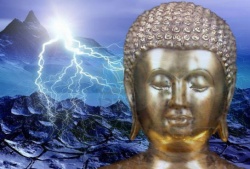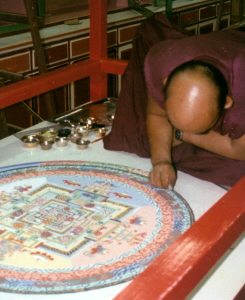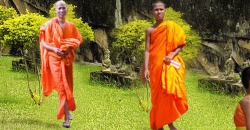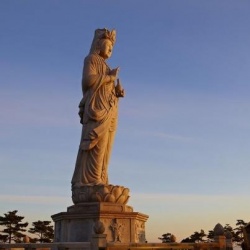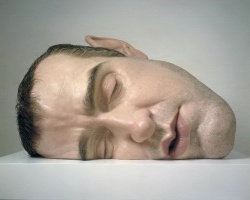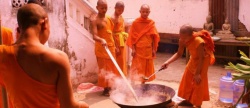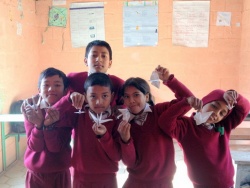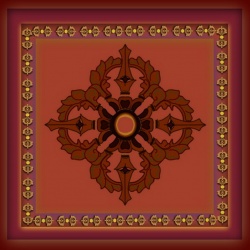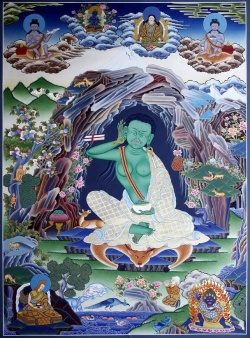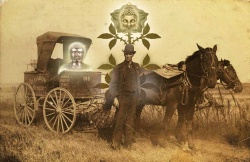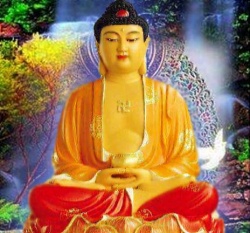Difference between revisions of "Śākyaśrībhadra"
| (2 intermediate revisions by the same user not shown) | |||
| Line 8: | Line 8: | ||
He had a brother named [[Buddhacandra]]. | He had a brother named [[Buddhacandra]]. | ||
| − | At the age of ten he studied {{Wiki|grammar}} under the [[brahman]] [Lakṣmīdhara]]. | + | At the age of ten he studied {{Wiki|grammar}} under the [[brahman]] [[Lakṣmīdhara]]. |
At the age of twenty-three, in 1149, he was [[ordained]] by [[Sukhaśrībhadradeva]] who gave him the [[name]] [[Subhadra]]. | At the age of twenty-three, in 1149, he was [[ordained]] by [[Sukhaśrībhadradeva]] who gave him the [[name]] [[Subhadra]]. | ||
| Line 16: | Line 16: | ||
| − | When [[Śākyaśrī]] was seventy-seven he was invited to [[Tibet]] by [[Tropu Lotsāwa Rinchen Sengge]] ([[khro phu lo tsA ba rin chen seng+ge]], b. 1173) who went to the [[Chumbi]] Valley in search of him; they met in a town called Vaneśvara. | + | When [[Śākyaśrī]] was seventy-seven he was invited to [[Tibet]] by [[Tropu Lotsāwa Rinchen Sengge]] ([[khro phu lo tsA ba rin chen seng+ge]], b. 1173) who went to the [[Chumbi]] Valley in search of him; they met in a town called [[Vaneśvara]]. |
[[Śākyaśrī]] was initially disinclined to accept the offer, as [[Tropu Lotsāwa]] was, at the time, quite young. | [[Śākyaśrī]] was initially disinclined to accept the offer, as [[Tropu Lotsāwa]] was, at the time, quite young. | ||
| Line 101: | Line 101: | ||
It seems that the previous year, at [[Lemoche]], a [[Drigung]] follower had approached [[Śākyaśrī]] requesting [[ordination]], but was refused. | It seems that the previous year, at [[Lemoche]], a [[Drigung]] follower had approached [[Śākyaśrī]] requesting [[ordination]], but was refused. | ||
| − | When the man pulled on Śākyaśrī's [[robes]], his [[Tibetan]] attendant, [[Jose Nyima]] ([[jo sras nyi ma]]) pushed him away violently, causing him to hit a [[tree]] trunk and bleed from the {{Wiki|nose}}. | + | When the man pulled on [[Śākyaśrī's]] [[robes]], his [[Tibetan]] attendant, [[Jose Nyima]] ([[jo sras nyi ma]]) pushed him away violently, causing him to hit a [[tree]] trunk and bleed from the {{Wiki|nose}}. |
Later, [[Tārā]], whom [[Śākyaśrī]] propitiated daily, appeared with her back turned towards him. | Later, [[Tārā]], whom [[Śākyaśrī]] propitiated daily, appeared with her back turned towards him. | ||
| Line 119: | Line 119: | ||
| − | [[Śākyaśrī]] is credited with establishing the Denchikpa (gdan gcig pa) [[tradition]] in [[Tibet]]. | + | [[Śākyaśrī]] is credited with establishing the [[Denchikpa]] ([[gdan gcig pa]]) [[tradition]] in [[Tibet]]. |
| − | He gave the Vajrāvali [[initiation]] three times. | + | He gave the [[Vajrāvali]] [[initiation]] three times. |
Among his [[disciples]] in [[Tibet]] not mentioned above were [[Chak Lotsāwa Choje Pel]] ([[chag lo tsA ba chos rje dpal]], 1197-1263/4), [[Tsang Sowa Sonam Dze]] ([[gtsang so ba bsod nams mdzes]], d.u.), and [[Chel Lotsāwa Chokyi Zangpo]] ([[dpyal lo tsA ba chos kyi bzang po]]). | Among his [[disciples]] in [[Tibet]] not mentioned above were [[Chak Lotsāwa Choje Pel]] ([[chag lo tsA ba chos rje dpal]], 1197-1263/4), [[Tsang Sowa Sonam Dze]] ([[gtsang so ba bsod nams mdzes]], d.u.), and [[Chel Lotsāwa Chokyi Zangpo]] ([[dpyal lo tsA ba chos kyi bzang po]]). | ||
| Line 135: | Line 135: | ||
| − | Alexander Gardner is Executive Director of the Shelley & Donald [[Rubin Foundation]] and the Director and Chief Editor of the [[Treasury of Lives]]. He completed his PhD in [[Buddhist Studies]] at the {{Wiki|University of Michigan}} in 2007. | + | [[Alexander Gardner]] is Executive Director of the Shelley & Donald [[Rubin Foundation]] and the Director and Chief Editor of the [[Treasury of Lives]]. He completed his PhD in [[Buddhist Studies]] at the {{Wiki|University of Michigan}} in 2007. |
Published July 2011 | Published July 2011 | ||
| Line 141: | Line 141: | ||
{{R}} | {{R}} | ||
[http://treasuryoflives.org/biographies/view/sakyasribhadra/2810] | [http://treasuryoflives.org/biographies/view/sakyasribhadra/2810] | ||
| − | [[Category: | + | |
| + | [[Category:Śākyaśrībhadra]] | ||
Latest revision as of 16:38, 18 November 2015
Śākyaśrībhadra was born in Daśobharā, in Kashmir, in 1127 (some sources have or 1145).
He had a brother named Buddhacandra.
At the age of ten he studied grammar under the brahman Lakṣmīdhara.
At the age of twenty-three, in 1149, he was ordained by Sukhaśrībhadradeva who gave him the name Subhadra.
At the age of thirty he went to Magadha where he received initiations from Ṥāntākaragupta, Daśabala, and Dhavaraka.
When Śākyaśrī was seventy-seven he was invited to Tibet by Tropu Lotsāwa Rinchen Sengge (khro phu lo tsA ba rin chen seng+ge, b. 1173) who went to the Chumbi Valley in search of him; they met in a town called Vaneśvara.
Śākyaśrī was initially disinclined to accept the offer, as Tropu Lotsāwa was, at the time, quite young.
Tropu Lotsāwa was able to ask questions on doctrine to each of the paṇḍitas in his retinue, and the following discussion impressed Śākyaśrī sufficiently to convince him to go to Tibet, arriving in 1204.
He was accompanied by several Indian paṇḍitas:
Sugataśrī, an expert in Madhyamaka and Prajñāpāramitā;
Jayadatta, in Vinaya;
Vibhūticandra, in grammar and Abhidharma;
Dānaśīla, in logic;
Saṅghaśrī, in Candavyākaraṇa;
Jīvagupta, in the books of Maitreya;
Mahābodhi, in the Bodhicaryāvatāra; and
Kālacandra in the Kālacakra.
Śākyaśrī is said to have brought with him relics of the Buddha that his brother, Buddhacandra, is said to have received from a Sinhalese arhat.
According to tradition, the arhat stated that the relics should be given to Jikten Gonpo Rinchen Pel ('jig rten mgon po rin chen dpal, 1143-1217).
The biographical tradition accounts for Śākyaśrī's location during each summer retreat during his time in Tibet:
1204 in Tropu (khro phu),
1205 in Lemoche (slas mo che),
1206 in Sinmori (srin mo ri),
1207 in Solnagtang (sol nag thang),
1208 in Gyangong (rgyan gong) in Nyangme (snyang smad),
1209 in Rinchengang (rin chen sgang),
1210 in Sakya,
1211 in Luggudong (lug gu gdong) in Shang,
1212 again in Tropu, and
1213 in Purang (pu hrang).
At Tropu he taught Prajñāpāramitā, the Prātimokṣa, and the Mahāyānasūtrālaṃkāra, and then went to Nartang (snar thang) where he also taught the Prajñāpāramitā.
During his travels he also visited Samye, Tsurpu (mtshur phu), Reting (rwa sgreng) and Tangpoche (thang po che), where he gave extensive teachings.
At Samye Śākyaśrī requested the local ruler, Jowo Lha (jo bo lha), who was a disciple of Kodrakpa Sonam Gyeltsen (ko brag pa bsod nams rgyal mtshan, 1182-1261), for access to the Sanskrit books at the Monastery.
He is said to have seen a Sanskrit manuscript of the Guhyagarbha tantra, an important event for the Nyingma tradition, which defends the Indian origin of the scripture.
Similarly, Śākyaśrī is credited with affirming the existence of a practice tradition of the Vajrakīlaya.
At some point during the first decade of the thirteenth century the Nyingma lama Drogon Namkha Pel ('gro ba mgon po nam mkha' dpal, d.u.) invited him to the community of Mawochok (smra bo lcogs) to consecrate the reliquary his father, Nyangrel Nyima Ozer (nyang/myang ral nyi ma 'od zer, 1124-1192).
Early in his time in Tibet, possibly while still on his route to Tropu from Chumik (chu mig) in 1204, he met Sakya Paṇḍita Kunga Gyeltsen (sa skya paN Di ta kun dga' rgyal mtshan, 1182-1251), who was on his way to Kyangdur (rkyang 'dur) with funeral offerings following the death of his father, Pelchen Opo (dpal chen 'od po, 1150-1203).
Śākyaśrī is said to have given him teachings on logic at the time.
During the 1208 summer retreat at Gyangong he met Sakya Paṇḍita again, and served as the upadhyaya in his ordination ceremony.
During the 2010 summer retreat at Sakya he gave Sakya Paṇḍita extensive teachings on Kālacakra, Vinaya, linguistics, poetics, logic and epistemology, and Abhidharma.
The two worked on a retranslation of Dharmakīrti's Pramāṇavārttika.
From this connection Śākyaśrī is often credited with initiating the tradition of logic in the Sakya; while some dispute this characterization, his importance to the Sakya tradition was considerable.
Śākyaśrī has a peculiar place in the Drigung tradition.
His time in Tibet was used by Drigung histories to promote the notion that Jigten Gonpo, whom Śākyaśrī never met, was a reincarnation of Nāgārjuna.
Vibhūticandra, one of Śākyaśrī's Indian attendants, spoke openly against an invitation to visit Drigung ('bri gung), and Śākyaśrī reprimanded him for it.
It seems that the previous year, at Lemoche, a Drigung follower had approached Śākyaśrī requesting ordination, but was refused.
When the man pulled on Śākyaśrī's robes, his Tibetan attendant, Jose Nyima (jo sras nyi ma) pushed him away violently, causing him to hit a tree trunk and bleed from the nose.
Later, Tārā, whom Śākyaśrī propitiated daily, appeared with her back turned towards him.
He asked why and she replied that his attendant had abused a disciple of Nāgārjuna -- reincarnated as Jigten Gonpo.
Vibhūticandra, sufficiently cowed, went to Jigten Gonpo for teachings and later erected a statue of Cakrasaṃvara in atonement.
Further assertions in Śākyaśrī's biographical tradition that Jigten Gonpo was the reincarnation of Nāgārjuna is found in an episode in which Śākyaśrī heard the Indian master's name emanating from a small stream near Drigung Monastery.
It would seem that Śākyaśrī accumulated considerable offerings during his travels, including gifts from Sakya, donating them only for the consecration of a large new image of Maitreya at Tropu in 1212.
He also donated the relics that his brother had sent with him to give to Jigten Gonpo.
Śākyaśrī is credited with establishing the Denchikpa (gdan gcig pa) tradition in Tibet.
He gave the Vajrāvali initiation three times.
Among his disciples in Tibet not mentioned above were Chak Lotsāwa Choje Pel (chag lo tsA ba chos rje dpal, 1197-1263/4), Tsang Sowa Sonam Dze (gtsang so ba bsod nams mdzes, d.u.), and Chel Lotsāwa Chokyi Zangpo (dpyal lo tsA ba chos kyi bzang po).
Despite repeated entreaties, Śākyaśrī left Kashmir, spending time in Lato with [[Tropu [Lotsāwa]], to whom he gifted a large amount of gold before leaving.
He went then to Ngari, spending the summer retreat of 1213 in Purang, and leaving Tibet in 1214.
Śākyaśrī spent about twelve years in Kashmir, where he repaired temples, ordained monks, and taught.
He passed away there in 1225 at the age of ninety-nine. He is said to have reincarnated as Buton Rinchen Drub (bu ston rin chen grub, 1290-1364).
Alexander Gardner is Executive Director of the Shelley & Donald Rubin Foundation and the Director and Chief Editor of the Treasury of Lives. He completed his PhD in Buddhist Studies at the University of Michigan in 2007.
Published July 2011
